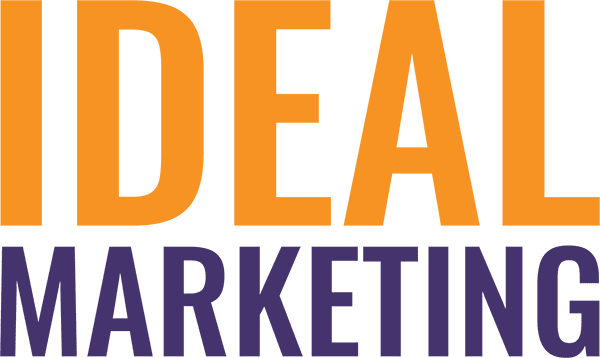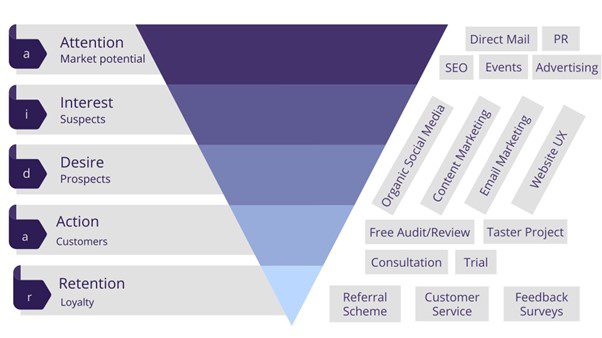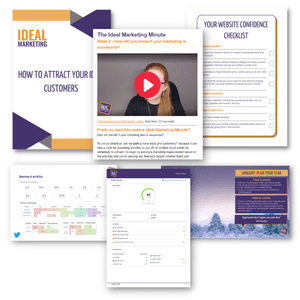What is a marketing channel?
Let’s get the basics out of the way, so that we’re all on the same page and know what we’re referring to:
A marketing channel is a tool that helps companies distribute information about products and sell them to the target audience.
Examples are:
- Social media
- PR
- SEO
- Email marketing
- Digital advertising
- TV advertising
- Video marketing
- Direct mail
- Networking
- Referral scheme
- Print advertising
The list goes on and there is some cross over but you get the idea…
Now the beady eyed amongst you may have noticed that the title of this post is ‘Choosing the right marketing channels…’, plural. However, you may be thinking, “I can just pick one right?” The short answer to this question is no. Have you heard the statement that ‘it takes around 5-7 touchpoints for a contact to become a customer’? It will be challenging to make all of those touchpoints over one channel. However, the right mix of channels will leave a potential customer perceiving that you are everywhere (in a good way), meaning they are more likely to think of you when they’re ready to buy.
What to consider when choosing your marketing channels
There are a few factors that will influence the right channels for your business. It’s important to try not to be too distracted by what everyone else is doing or by the latest fad. There will always new technologies and updates, but it’s better to commit to doing fewer channels well than diluting your efforts across them all. Consider:
- Marketing budget – there’s a huge range in price with different marketing channels and although some channels are cheap/free they require a time investment.
- Your audience’s whereabouts – how targeted can you be in who you want to talk to? There’s no point advertising on TV if your target customers mostly watch YouTube or posting on LinkedIn when they’re easier and cheaper to target on Facebook.
- Resources – do you or your team have time to create materials and messaging for the channels? If not do you need to hire someone external and what the ongoing cost of this will be?
- Timeframe – how quickly do you need or want to see results?
- Stage of the funnel – customers rarely see a message once and buy. There’s a journey of building trust before this happens, particularly with larger ticket items or anything with a commitment. With so much to consider you may feel more confused than ever, so we’ve put together a handy table which touches on some of these points.
Marketing channels comparison table
| Type | Cost | Timeline to see results | Good for | Bad for |
| Content marketing (usually a combination of website posts, email marketing and social media) | ££ | ⏳⏳⏳ | Taking a potential customer through the marketing funnel on autopilot from attraction to sale. | Quick results, as some of the content required are long-form guides and videos that take time to build but are worth it. |
| SEO | £-££ | ⏳⏳ | Helping your ideal clients find you. | Keeping customers sticking around rather than landing on your site to read what they came for and leave. |
| Organic social media | £ | ⏳⏳ | Keeping potential clients thinking of you and becoming aware of what you do while building trust in the brand. | Converting leads into sales. People turn off if you sell too hard and only promote yourself. Also, social media algorithms don’t favour self-promotion. |
| Email marketing | £ | ⏳⏳⏳ | Easing potential customers through a marketing funnel, encouraging current customers to come back to you and building trust in the brand. | Attracting customers. Since GDPR has enforced good quality email marketing, you need to build a list that provides great content consistently, which can take time. |
| Digital advertising | £££ | ⏳ | Getting in front of your target market FAST and filling your marketing funnel with prospects. | Long term plans and small budgets. Depending on the platform, you’ll need to make a minimum commitment and the minute you switch off the ads, your marketing mechanism is gone. |
| PR | ££ | ⏳⏳ | Raising awareness of your brand and building a positive impression of your expertise and authority. | Slower results and it can be difficult to prove return on investment. It’s hard to predict what will be picked up by the media and challenging to prove the exposure and impression PR makes. However, PR has the potential to make a big splash without high costs. |
| Direct mail
|
£££ | ⏳ | Getting in front of new potential customers and getting noticed, particularly if you’re creative with your mailer. | Long term results – once you send a campaign, you’re done unless you rerun it to another area. |
Marketing channels and the customer journey
Now you’ve considered budget, timeframe and the strengths and weaknesses of each channel, it’s time to address the phases of a customer journey. In this example we’ve used the AIDA marketing model, which stands for ‘Awareness/Attention, Interest, Desire and Action’.
Each of these phases in the customer journey sparks a different level of interest from a potential customer as they need the answers to different questions to progress to the next phase. The best marketing plan will have a range of messages to address these phases and be delivered over a mixture of channels to match your audience’s interests.
Still not sure which marketing channels to pick?
As a full-service marketing company, we’re in a position to support you, whichever channels work best for your business goals. If you’d like to find out more, why not claim your free marketing consultation?

MD & Head of Digital Marketing
Jessica has worked in digital marketing for over 10 years and has watched it evolve from an experimental marketing option to an essential tool for most businesses. She is driven to help businesses achieve their objectives using the best digital marketing resources available and recognises that each business is different. Jessica devours the latest news about digital marketing and is constantly learning in order to stay ahead of the trends for clients.








